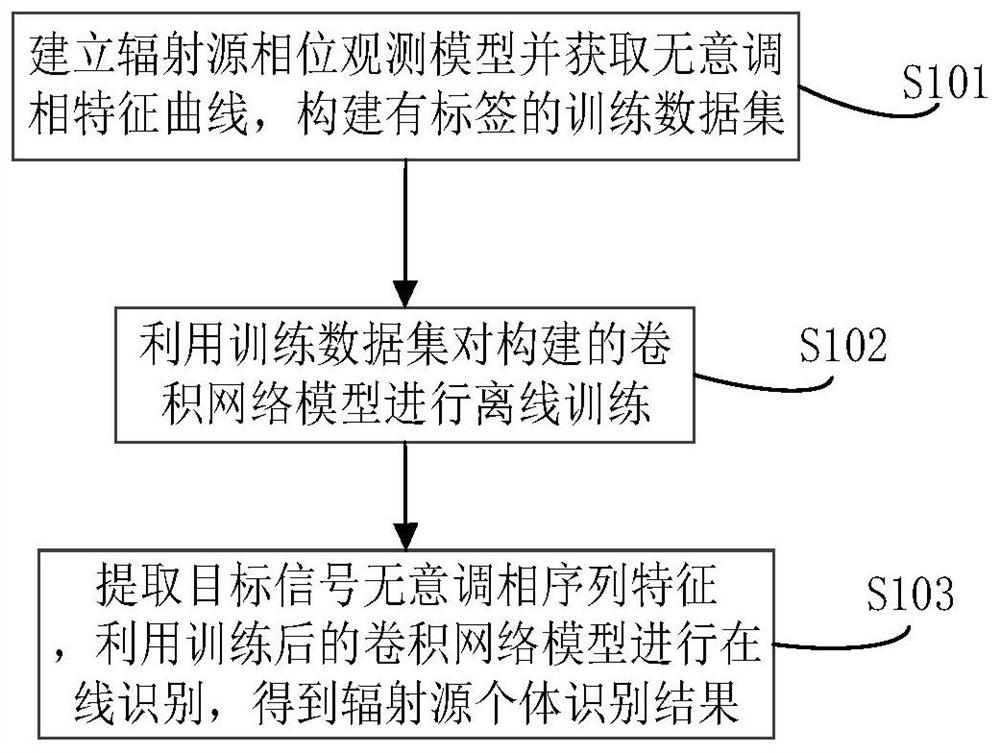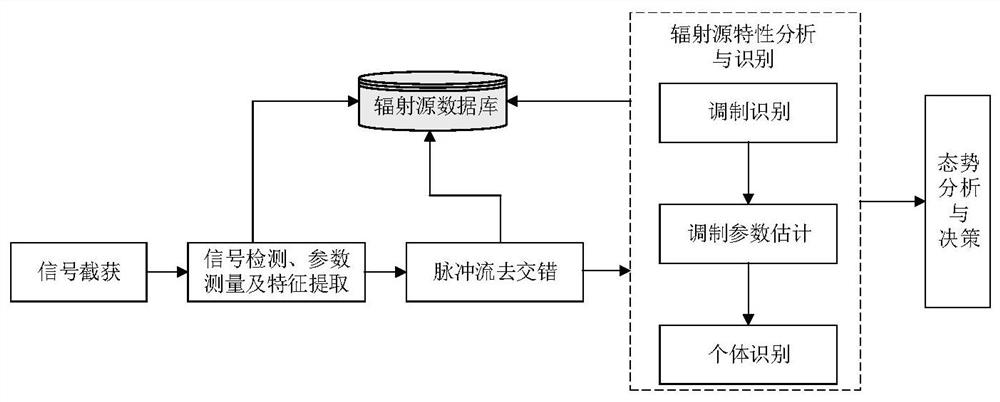Radar Radiator Individual Identification Method and Device Based on Unintentional Phase Modulation Characteristics
A radiation source and phase modulation technology, applied in radio wave measurement systems, instruments, etc., can solve problems such as unfavorable classifier learning and large impact, and achieve the effects of excellent performance, short identification time, and accurate identification.
- Summary
- Abstract
- Description
- Claims
- Application Information
AI Technical Summary
Problems solved by technology
Method used
Image
Examples
Embodiment Construction
[0036] In order to make the purpose, technical solution and advantages of the present invention more clear and understandable, the present invention will be further described in detail below in conjunction with the accompanying drawings and technical solutions.
[0037] Intrapulse unintentional phase modulation is the key and basis for individual identification of radar emitters. In order to solve the shortcomings of the existing methods for individual identification of radar emitters based on UPMOP characteristics, the embodiments of the present invention refer to figure 1 As shown, a radar emitter individual identification method based on unintentional phase modulation characteristics is provided, including:
[0038] S101) Establishing a radiation source phase observation model and obtaining an unintentional phase modulation characteristic curve, and constructing a labeled training data set;
[0039] S102) using the training data set to perform offline training on the constr...
PUM
 Login to View More
Login to View More Abstract
Description
Claims
Application Information
 Login to View More
Login to View More - R&D
- Intellectual Property
- Life Sciences
- Materials
- Tech Scout
- Unparalleled Data Quality
- Higher Quality Content
- 60% Fewer Hallucinations
Browse by: Latest US Patents, China's latest patents, Technical Efficacy Thesaurus, Application Domain, Technology Topic, Popular Technical Reports.
© 2025 PatSnap. All rights reserved.Legal|Privacy policy|Modern Slavery Act Transparency Statement|Sitemap|About US| Contact US: help@patsnap.com



